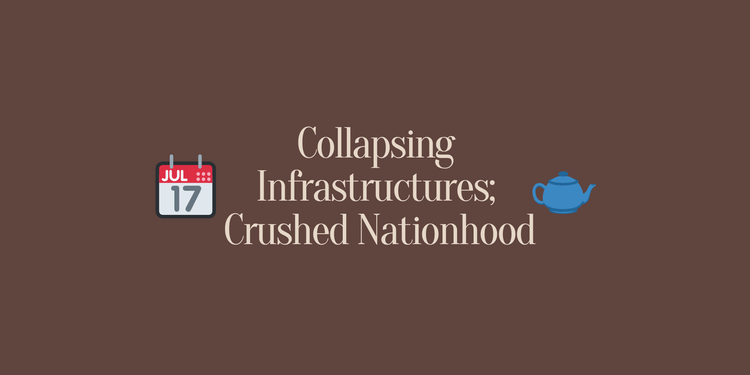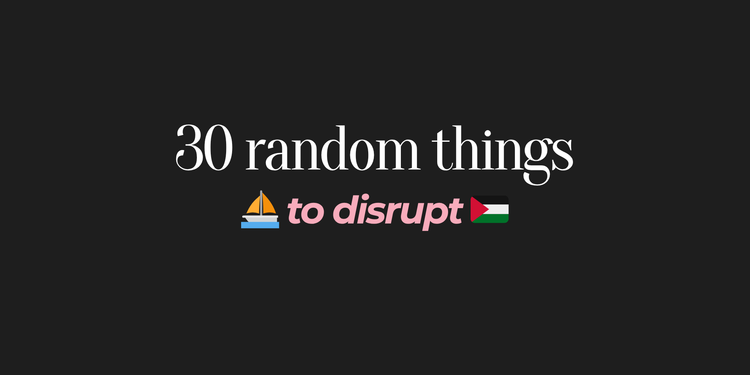📹 Instead of Dancing Dragons, We Get Dancing Lobsters 🦞

This may surprise you:
the PRC is the second largest importer of Canadian fish & seafood 🦞🦀🦐🐠
- The largest seafood export in 2019 was LOBSTERS at $509 M - twice over in value compared to the second most exported item with crabs ($266 M)
- 1 in 5 Canadian lobsters were exported to the PRC
- Nova Scotia contributes 91% of lobster export at $461M, followed by Prince Edward Island ($22M) and New Brunswick ($19M)
“From 2015 to 2019, lobster was one of Canada’s largest growing fish and seafood exports to China by value. With a 41 per cent compound annual growth rate, the value of Canadian exports of lobster to China almost quadrupled in recent years, from $129M in 2015 to $509M in 2019.”
- These data were published by Fisheries and Oceans Canada’s 2021 report on Canada’s fish and seafood trade with the PRC
Now that we have established lobsters as a lucrative business opportunity for Canadian fishers and local industries (packaging, logistics, cargo- we also have to confront the exploitation that enable these capitalist pursuits:
To situate nationhood of Canada in the settler-colonial context:
- Mi'kmaq peoples signed treaties with colonizers in the mid 1700s and never ceded their land
- The treaty states Indigenous communities “shall not be hindered from, but have free liberty of Hunting & Fishing as usual” in 1752.
- In 1999, the Supreme Court ruled in affirmation of First Nations’ treaty right to fish, hunt, and gather in pursuit of a moderate livelihood.
Mi'kmaq’s right to fish is interfered and by the commercial fishing companies and practice
- This resulted in a dispute between Mi'kmaq communities and non-Indigenous commercial fishers in 2020
Let’s be clear: Indigenous communities are stewards of the land - long before sustainability was cool, Indigenous peoples were practitioners of sustainable fishing.
- This is also backed up by marine scientists:
- The 2020 dispute was triggered by the Sipekne’katik First Nations, who laid out 250 traps.
- This is nothing compared to the 29 thousand tonnes exported to PRC in 2019
- Legally, Sipekne’katik First Nations has 7 fishing licence.
- Non-Indigenous commercial fishers threatened to burn First Nations fishers in their compound if they did not hand over their lobsters.
- This stand off ended with non-Indigenous commercial fishers pouring solvents and burning $40,000 worth of lobsters.
For people who want to talk about business, I will indulge and unpack this as well: non-Indigenous commercial fishers are having a hard time exporting lobsters from Halifax.
- As early as 2014, a Chinese company Zoneco bought a lobster farm in Halifax. CBC reported Zoneco 35,000 pounds of lobster a week to the PRC
- Interesting to note Zoneco’s president met with the NS premier during a trade mission to the PRC
- I won’t dwell on it, but a lot to be said about the influence of Chinese businesses at a provincial level. ACHK’s past report In Plain Sight discussed how these trade relationships are one of the many vectors where United Front work and foreign influence activities occur.
Colin Sproul, an inshore fishermen's representative testified in Parliament, who quote want to ”ensure national Canadian control of our logistics chain within the country”.
- Canadian commercial fishers are pressured to drive their lobsters to Moncton and even New York
- First Catch was cited as an example, a Chinese export company that spent $9 million on its own lobster handling facilities at Halifax airport, an anchor tenant with a 25-year lease.
- Interesting to note: First Catch seems to be out of business according to Google
This is where I throwback to a headline from the Globe and Mail from 2023. What a heading.
- When the PRC implemented new measures to their import rules, which created additional challenges to Canadian exporters. With no clear instructions from Chinese customs, Canadian exporters struggled.
- Commercial fishers and exporters literally positioned themselves as the hostages.
Lots unpacked here: Canada’s lobster export to the PRC is a major federal, provincial, and local issue
📝 Reference List 📝
Alliance Canada Hong Kong (2021). "In Plain Sight: Beijing’s Unrestricted Network of Foreign Influence". https://alliancecanadahk.com/achk-releases-new-report-on-foreign-influence-activities-in-canada/
Alexander Quon and Karla Renic (2020). “‘Terrorizing our people’: N.S. Mi’kmaw fishers have property vandalized, lobsters destroyed”. Global News. https://globalnews.ca/news/7396039/mikmaw-vehicle-burned-lobster-destroyed-by-commercial-fishermen-sipkenkatik/
APTN National News (2020). “The Facts Behind Mi’kmaw Fishing Rights”. https://www.aptnnews.ca/national-news/the-facts-behind-mikmaw-fishing-rights/
Fisheries and Oceans Canada (2021). “Canada’s Fish and Seafood Trade with the People’s Republic of China, 2019”. Government of Canada. https://www.dfo-mpo.gc.ca/ea-ae/economic-analysis/Canada-China-Fish-Seafood-trade-commerce-poisson-fruits-de-mer-eng.html
Fisheries and Oceans Canada (2022). “The Marshall decisions”. Government of Canada. https://www.dfo-mpo.gc.ca/fisheries-peches/aboriginal-autochtones/moderate-livelihood-subsistance-convenable/marshall-overview-apercu-eng.html
Megan Bailey (2020). “Nova Scotia lobster dispute: Mi’kmaw fishery isn’t a threat to conservation, say scientists”. The Conversation. https://theconversation.com/nova-scotia-lobster-dispute-mikmaw-fishery-isnt-a-threat-to-conservation-say-scientists-148396
Paul Withers (2023). “Nova Scotia MP questions Chinese 'control' over lobster industry”. CBC News. https://www.cbc.ca/amp/1.6853496
Paul Withers (2022). “Canadian live lobster industry warned to expect new Chinese customs measures”. CBC News. https://www.cbc.ca/news/canada/nova-scotia/canada-live-lobster-industry-new-chinese-customs-measures-1.6490118
Paul Withers (2015). “Nova Scotia lobster, or 'Boston Lobster' in China, could be rebranded” CBC News. https://www.cbc.ca/news/canada/nova-scotia/boston-lobster-china-1.3213474



Comments ()